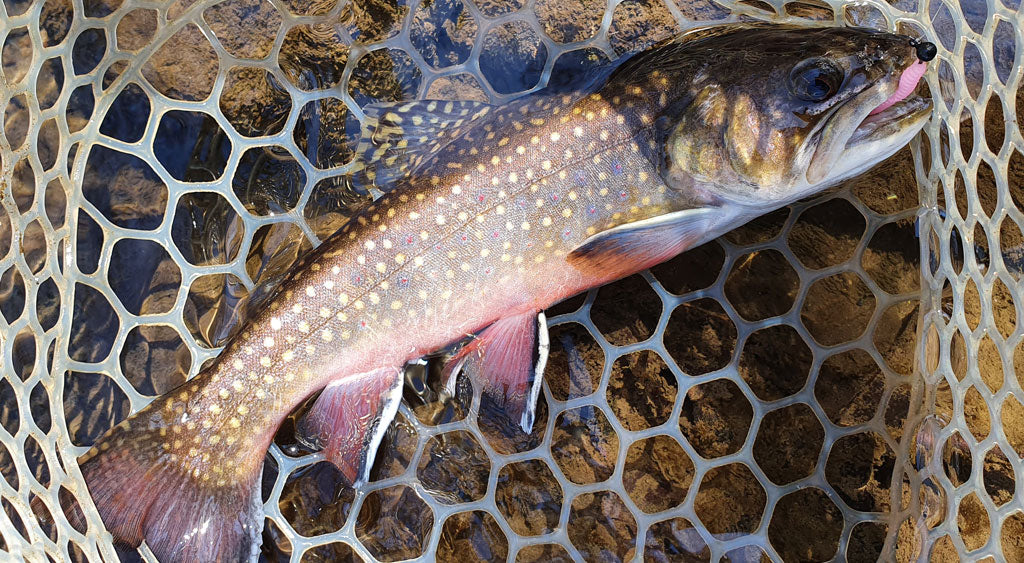
How to choose trout worm colors
Trout worms are small soft plastic lures that catch fish in a lot of situations. While these little worms were once rare to see on trout streams, they are now utilized by anglers around the world.
But how do you choose a trout worm color? They are available in every shade from bright orange to dark purple. Which color works best?
We sell both 2-3/8" and 3" soft plastic worms in a wide variety of colors. Most people call these lures as "trout worms." We also refer to them as finesse worms, since they work for other species like bass and crappie too.
For the sake of this guide, we will stick to using small soft plastic worms for trout and salmonids. Now let's get into selecting trout worm colors for these fish.
Basic trout worm colors
As stated, trout worms come in a long list of colors. Some are specialty colors. Others are wild concoctions that emerge from the imaginations of their creators.
Over the years, we've found that a few basic colors will catch fish in most conditions. Those colors are pink, white, brown and black.
Other colors can and do catch fish. Sometimes they are the only colors that will illicit a bite. But by and large the four basic colors will catch fish most of the time.

Pink has long been the most popular color of trout worm. So much so that some people simply refer to these lures as "pink worms."
Pink certainly does work well on trout. Especially on cutthroat, rainbows and steelhead. In fact, we often start out fishing with a pink worm and only move on to other colors if that doesn't work.
White is usually our next color after pink. When drifted horizontally, twitched or jigged, a white trout worm can look a lot like a small minnow-like fish. All trout eat other fish, which might explain why white works so well.
We find that more natural colors like brown and black tend to catch more brown trout and brook trout. Yet we've also caught everything from rainbow trout to whitefish on dark worms.
Basic principles of color selection
Any color worm can catch a fish on any given day. However consistent success requires more than just random luck. Thankfully, there are some general guidelines that can help you select trout worm color based on conditions.
In high and stained water darker and brighter worms are easier for fish to locate. In the same vein, dark colors often work well when fishing at night. But if the moon is shining bright a shimmering solid color may be more effective.

The famous pink worm shines best in the high and slightly off color flows of spring. But it can also work well in low water or when fishing for steelhead.
Finicky fish will often fall to a cheese or disco avocado worm when all else fails. The idea is that since fish don't see these colors as often, they don't learn to associate them with danger.
Here's a handy chart that can help you select trout worm colors based on the situation.
| Situation | Suggested worm colors |
| High and muddy water | Black, chocolate, orange, chartreuse |
| High and green water | Neon pink, pink, chartreuse, white |
| Low and clear water | White, natural, pink shad, pumpkinseed |
| Picky fish | Cheese, disco avocado, mystic smoke, gray |
| Night fishing | Black, black gold, pearl white |
| Steelhead fishing | Pink, neon pink, bubblegum, white |
Remember that these are just guidelines, not hard and fast rules. The more you use trout worms the more experience you will gain. That will help you make the best decisions when you're out on the water.
There may be times when red worms are the best thing you can throw in a high and muddy river. Other days a flashy orange gold worm might catch fish in low crystal clear water.
We are just trying to give you a place to start. Begin with a healthy dose of trial and error. Then let the fish and environment guide you.

For example, you might fish the White River in Arkansas during a shad die off. After watching trout gorge on dead shad with shiny white bellies, you could decide to try a pearl white trout worm and find that it works wonders in "matching the hatch."
The next month you might return to find that White River trout are now dining on natural red worms washed in from high water releases. So you could then switch to a natural colored trout worm.
Or you could fish a certain river regularly where one color just seems to work better than others. We know places where gray worms consistently outfish other colors no matter the conditions.
Hopefully this will help you choose the right trout worm color for your fishing. Some anglers carry all the different colors they can carry. Others carry just one or two basic colors like pink and white with the idea that these two colors often just work. Find the style that suits you best and enjoy your time fishing.
